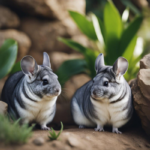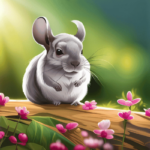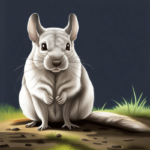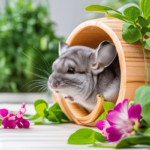Chinchillas are captivating rodents known for their plush fur, expressive eyes, and playful nature. But beyond their cuteness, lies a diverse world of breeds, each with its own unique charm and characteristics.
Whether you’re a seasoned chinchilla owner or simply curious about these fascinating creatures, this guide will take you on a journey through the fascinating world of Chinchilla Breeds.
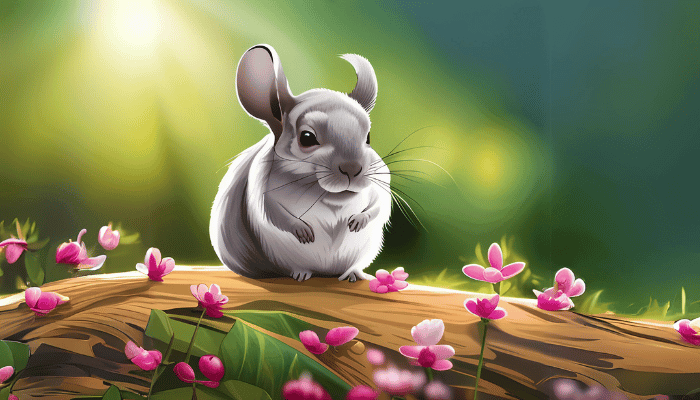
Chinchilla Breeds
There are two main species of chinchillas, each with its own distinct breed variations:
Long-Tailed Chinchillas (Chinchilla lanigera)
Standard Chinchilla:
- Appearance: The classic beauty of the Chinchilla world, the Standard Chinchilla boasts a luxurious coat of shimmering silver-grey tipped with black guard hairs. This creates a stunning play of light and shadow, making each movement graceful and elegant.
- Personality: These gentle giants are known for their docile and curious nature. They enjoy playtime and interaction but are equally content lounging in their cage, observing the world with their bright, inquisitive eyes.
- Care: Standard Chinchillas require a spacious cage with proper ventilation and regular dust baths to maintain their dense fur. A healthy diet of high-quality chinchilla pellets, hay, and fresh water is essential.
White Mosaic Chinchilla:
- Appearance: Imagine a snowy landscape dotted with charcoal speckles – that’s the captivating coat of the White Mosaic Chinchilla. Patches of grey or black fur dance across their white base coat, creating a unique and ever-changing pattern.
- Personality: Compared to the Standard Chinchilla, White Mosaics tend to be slightly calmer and more reserved. They appreciate gentle handling and quiet environments, making them ideal companions for laid-back owners.
- Care: Similar to the Standard Chinchilla, White Mosaics need a spacious cage with good ventilation and regular dust baths. Their delicate white fur might require slightly more frequent dusting to maintain its pristine appearance.
Beige Chinchilla:
- Appearance: Warm and sunny, the Beige Chinchilla’s coat exudes a cheerful vibe. Their creamy-beige fur is tipped with black guard hairs, adding depth and dimension to their overall look.
- Personality: Playful and curious, Beige Chinchillas are a bundle of energy. They love exploring their surroundings, climbing, and engaging in playtime. Their inquisitive nature makes them delightful companions for active owners.
- Care: Beige Chinchillas require the same standard care as the other long-tailed breeds: a spacious cage, proper ventilation, regular dust baths, and a healthy diet. Their playful nature might necessitate additional enrichment activities and toys to keep them stimulated.
Ebony Chinchilla:
- Appearance: For those who prefer a touch of drama, the Ebony Chinchilla reigns supreme. Their sleek, pitch-black coat is a sight to behold, absorbing light and exuding an air of mystery.
- Personality: Confident and independent, Ebony Chinchillas are often described as the “cool kids” of the Chinchilla world. They can be slightly more reserved than other breeds but are equally affectionate and playful once they bond with their humans.
- Care: While their fur might seem low-maintenance due to its dark color, Ebony Chinchillas still require regular dust baths and a healthy diet to maintain their glossy coat. Their independent nature might require a slightly different approach to handling and bonding compared to other breeds.
Short-Tailed Chinchillas (Chinchilla chinchilla)
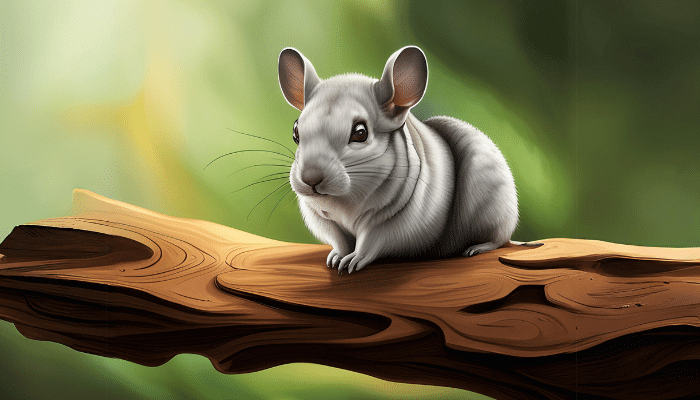
Royal Persian Chinchilla: This breed has a long, dense coat with a white base and black tipping.
Wilson White Chinchilla: This breed has a pure white coat with no guard hair tipping.
Black Velvet Chinchilla: This breed has a solid black coat with a velvety sheen.
Additional Chinchilla Varieties
Besides these distinct breeds, several other color variations and mutations exist within the chinchilla world. Some popular examples include:
Heterozygous Chinchilla: These chinchillas have a mix of colored and white fur.
Charcoal Chinchilla: This breed has a dark grey coat with a charcoal undertone.
Violet Chinchilla: This breed has a distinctive violet-colored coat.
Chinchilla Breeds Comparison Table

For a quick reference, here’s a handy table comparing the key features of the prominent Chinchilla Breeds:
| Breed | Fur Color | Personality | Notable Features |
|---|---|---|---|
| Standard Chinchilla | Shades of Gray | Friendly and Sociable | Classic fluffiness |
| Black Velvet Chinchilla | Jet Black | Elegant and Playful | Striking ebony fur |
| Wilson White Chinchilla | Snow White | Charming and Docile | Purity in fur |
| Ebony Chinchilla | Deep Black | Mysterious and Charismatic | Dark and captivating |
| Royal Persian Angora | Silky Long Fur | Regal and Dignified | Aristocratic charm |
Choosing the Right Chinchilla Breed for You
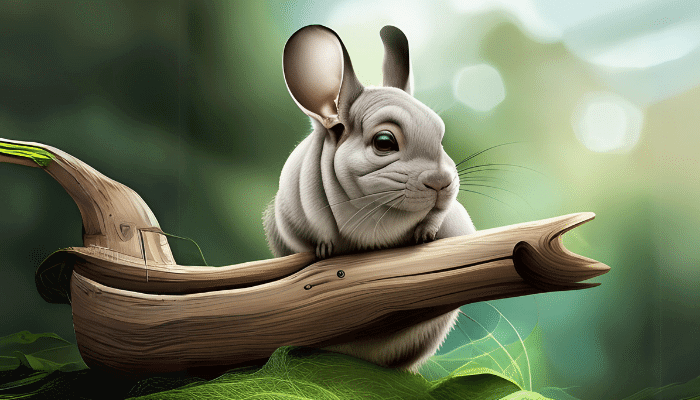
With so many Chinchilla Breeds available, selecting the perfect furry friend can feel overwhelming. Consider these factors before making your decision:
Lifestyle: Do you have the time and resources to adequately care for a chinchilla?
Temperament: Are you seeking a playful and energetic companion or a calmer, more relaxed pet?
Fur Color and Pattern: Do you have a specific color or pattern preference?
Availability: Certain breeds may be rarer and more challenging to find.
Remember, each Chinchilla, regardless of breed, is an individual with its own unique personality and needs. Choosing the right breed for you depends on your lifestyle, preferences, and ability to provide proper care.
Chinchilla Breeds Care: A Primer
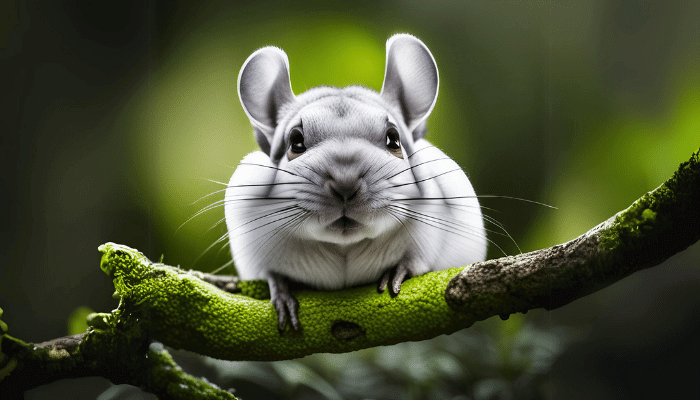
Caring for these charming creatures involves understanding their specific needs and quirks.
Proper Housing
Creating a safe and comfortable habitat is crucial for your furry friend’s well-being. Provide a spacious cage with platforms, ledges, and hiding spots to cater to their playful and active nature.
Nutrition Essentials
A balanced diet is key to maintaining your Chinchilla’s health. High-quality hay, supplemented by pellets and occasional treats, ensures they receive the essential nutrients for a happy and energetic life.
Dust Baths
Chinchillas have unique grooming needs, and regular dust baths are essential for maintaining their luxurious fur. Provide a dust bath a few times a week to keep their coats clean and healthy.
Social Interaction
Chinchillas are social creatures, and companionship is vital for their well-being. Consider adopting a pair to ensure they have a playmate, reducing the risk of loneliness and boredom.
Veterinary Care
Regular veterinary check-ups are crucial to monitor your Chinchilla’s health. Keep an eye out for any signs of illness and address them promptly to ensure a long and happy life for your furry friend.
Conclusion
Chinchillas are enchanting creatures that make wonderful companions for responsible owners. By understanding the various Chinchilla Breeds available and their specific needs, you can choose the perfect furry friend for your home and embark on a rewarding journey of companionship and joy.
Remember, providing proper care and a loving environment is paramount to ensuring your chinchilla thrives for years to come.
FAQs

How long do chinchillas live?
Chinchillas can live for 15-20 years with proper care. Providing a healthy diet, a spacious cage, and regular veterinary check-ups contribute to their longevity.
Are chinchillas easy to train?
Chinchillas are intelligent creatures and can be trained with patience and positive reinforcement.
Are chinchillas hypoallergenic?
While no pet is entirely hypoallergenic, chinchillas are less likely to trigger allergies compared to other animals.
Do chinchillas make good pets?
Chinchillas can make wonderful pets for individuals who can provide them with the necessary care and attention.
What makes Chinchillas unique pets?
Chinchillas are unique due to their luxurious fur, playful nature, and adaptability. They thrive in social environments and form strong bonds with their human companions.
Can Different Chinchilla Breeds Coexist?
Yes, Chinchillas of various breeds can live harmoniously together, provided they are introduced properly. It’s essential to monitor their interactions initially to ensure a smooth integration.



